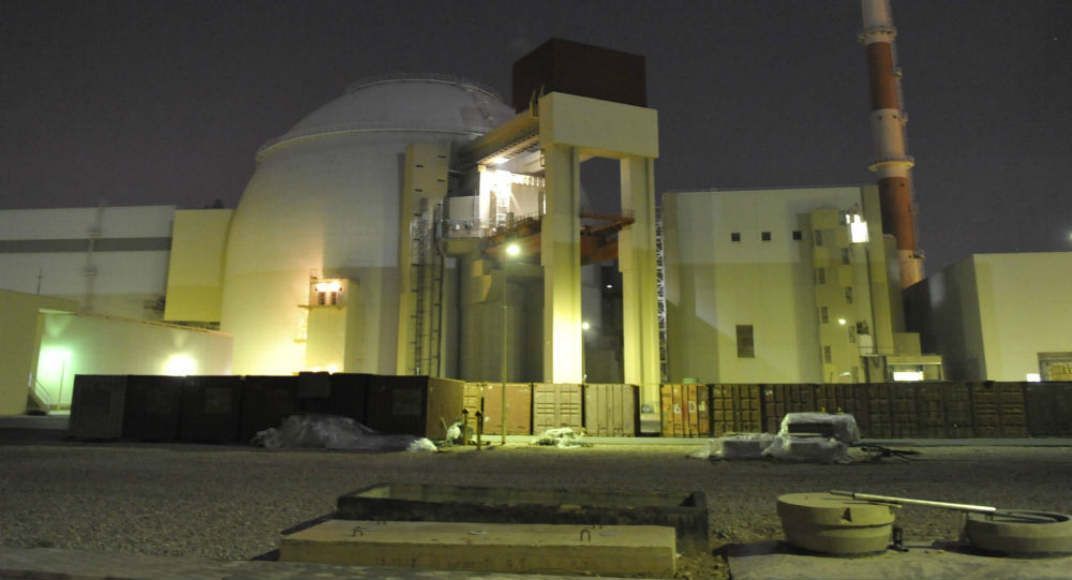On April 12, Iran temporarily shut down the Bushehr Nuclear Power Plant, in the country’s southern regions, for annual maintenance, according to Mahmoud Reza Jafari, the deputy director of the Atomic Energy Organization of Iran (AEOI).
“The Bushehr Nuclear Power Plant was temporarily shut down yesterday for scheduled annual maintenance, which includes repairs and replacement of its nuclear fuel,” Mr. Jafari was quoted by the daily Ettelaat as saying, citing a report by the Islamic Republic of Iran Broadcasting (IRIB). “The temporary closure was coordinated with the Iran Grid Management Company (IGMC).”
Mr. Jafari is also the managing director of the Nuclear Power Production and Development Company of Iran (NPPD), which operates under the auspices of the AEOI.
Fuel is usually replaced after being in the core of a nuclear power plant for six years, which means every two years. A third of the fuel is changed, and the other two-thirds are moved around to make for even burning.
“Changing the fuel will enable the plant to operate at the optimum level during summer when electricity is at peak demand,” Jafari explained. “Since becoming operational, the Bushehr Nuclear Power Plant’s Unit-1 has supplied 43 billion kilowatt-hours of electricity to the national power grid. The plant has produced 7.2 billion kilowatt-hours of electricity since the last time its fuel was changed in May 2019.”
The Bushehr Nuclear Power Plant was previously shut down for two months in March 2018 for emergency maintenance and fuel change. Back then, the AEOI hinted that the government’s budgetary problems and a rise in the foreign exchange rate could impact the operation of the facilities.
Construction on the Bushehr Nuclear Power Plant started in 1975 during the reign of Mohammad Reza Shah Pahlavi. The contract, worth around $5 billion, was awarded to the German company Kraftwerk Union AG (KWU). The company left Iran shortly after the 1979 Islamic Revolution. By then, it had only completed, respectively, 50 percent and 85 percent of the construction on the two reactors.
Subsequently, the work on the plant stopped until 1995 when Iran signed a memorandum of understanding (MOU) with Russia’s Ministry of Atomic Energy (Minatom). The main contract was awarded to the Russian company, Atomstroyexport.
The project has suffered many delays in the past two decades because of political pressure from the West and financial challenges facing Iran.
The Bushehr Nuclear Power Plant eventually became operational in August 2010 and was connected to the national power grid the following year. By the end of 2013, the plant was producing electricity for the national power grid.
A year later, Iran and Russia signed an agreement to build two new nuclear reactors at the Bushehr site. The construction started in 2017. Russia plans to complete the construction of units 2 and 3, respectively, in 2024 and 2026.
“The national power grid pays $0.015 for one kilowatt-hour of electricity,” the Iranian Students News Agency (ISNA) quoted the former deputy director of the AEOI, Mohammad Ahmadian, as saying in February 2019. “A jump in the foreign currency exchange rates has caused financial problems, making it difficult to buy spare parts and fuel for the Bushehr Nuclear Power Plant.”
According to Mr. Ahmadian, running the Bushehr Nuclear Power Plant depended heavily on the revenue from the sale of its electricity to the national power grid.
In comments reported by the IRIB’s “Khabar” (News) TV channel on April 9, AEOI Spokesman Behrouz Kamalvandi said: “Iran’s financial problems will not hinder its joint nuclear projects with Russia.”
“The construction projects at the Bushehr Nuclear Power Plant should finish by 2025 or 2026,” Mr. Kamalvandi added. “The construction of Unit-2 of the plant is moving according to plan.”
AEOI head Ali Akbar Salehi and the First Deputy Director-General for Operations Management at Russia’s State Atomic Energy Corporation (ROSATOM) Alexander Lokshin attended the groundbreaking ceremony for the construction of Unit-2 of the Bushehr Nuclear Power Plant in November 2019.
Mr. Lokshin is also the managing director of Atomstroyexport, an exporter of nuclear power equipment and services, owned by ROSATOM.



